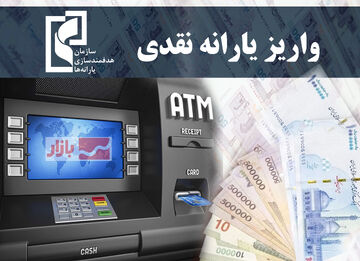Tehran(Bazaar): Mohammad Hashemi Joo, PhD, Professor of Finance Department of Accounting & Finance Willie A. Deese College of Business and Economics North Carolina A&T State University in interview with Bazaar News Agency said: I believe partnerships among developing countries and developed countries is a key to globally facilitate the e-commerce platforms.
Bazaar: What is the impact of e-commerce on the economies of countries?
Hashemi Joo: I believe e-commerce has a great positive impact on global economy. e-commerce leads to sustained growth which may result in greater innovation. Ecommerce is a fast-growing business method which surpasses one trillion dollars by end of 2022. E-commerce removes the barriers to entry that businesses face in traditional brick-and-mortar commerce. Therefore, the current e-commerce climate promotes entrepreneurship and makes it possible for businesses of all sizes to compete. The higher competition among online sellers generates new economy growth and encourage innovation among sellers. Sellers have more incentives to makes their product unique and offer their customers the services that keep them coming back. This creates greater incentive for customers to shop online and drives growth for the economy in general.
In addition, beyond the direct effects that e-commerce has on the economies, it reduces countries’ carbon footprint. E-commerce is more carbon-efficient than traditional brick-and-mortar commerce since online stores rely less on physical store locations. As a results, e-commerce may have positive long-term benefits for the environment which in turn can increase welfare and quality life of individuals.
Bazaar: What steps should governments take to facilitate e-commerce platforms?
Hashemi Joo: I believe partnerships among developing countries and developed countries is a key to globally facilitate the e-commerce platforms. Governments in developing countries need to get support from developed countries with successful e-commerce experiences to improve capacity-building and technical support to facilitate their e-commerce platforms. This Support may include e-commerce readiness assessments, financing of infrastructure investment, support for the development of legal and regulatory frameworks, and capacity building among diverse stakeholder groups.
Bazaar:What strategies should be considered for e-commerce security?
Hashemi Joo: Following are four main strategies that can improve e-commerce security:
1. Install HTTPS protocols and SSL certificates
Websites using HTTPS protocols and SSL certificates encrypt and protect customers’ data properly.
2. Implements Card Value Verification (CVV) and Address Verification System (AVS)
Using both CVV and AVS together can increase security of online payments and reduce the possibility that someone who stole the credit card of another person can take advantage of the card.
3. Perform Periodic Backups
Performing periodic backups by installing plugins such as UpdraftPlus, BackupBuddy, BoldGrid Backup, BackWPup, and other security plugins is very important. These plugins make the regular copies of e-commerce databases without human errors.
4. Use of multilayered security
Multilayered security can be achieved by use of different measures, such as the installation of a firewall, which provides an initial defense against cyber threats. Also, the use of a CDN (content delivery network) is helpful since it adds an extra layer of security by diversifying the copies of data in several geographical points.
Bazaar:What new technologies have been used in this field in recent years?
Hashemi Joo: Multi-factor authentication (MFA), 2-factor authentication (2FA), or 2-step verification (2SV) are recently used to improve the security of e-commerce. While MFA, 2FA, and 2SV are similar, there are differences among them. In all of these methods, in addition to entering a username and password, at least one further layer of identity verification of a user logging in to a site is needed. Below are brief explanations of each method:
• 2SV requires the user to enter a one-time code which is delivered via an email, text message, or phone call.
• 2FA goes a step further and may require the user to acknowledge their login attempt through another device, like opening a specific app on a mobile device while logging in from a laptop.
• MFA is similar to 2FA but can refer to the implementation of more than two factors of authentication.
















نظر شما